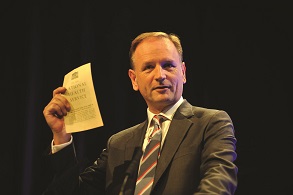Planning guidance: CCG allocations issued
The national body said £1bn a year will be distributed to areas with the greatest need under a revised funding formula. This uses a number of refreshed models, including for assessing need in community services and mental health and learning disabilities, as well as the adjustment for health inequalities and unmet need.
The allocations take account of unavoidable cost differences by applying the market forces factor (MFF). The MFF is due to be updated, with the new values phased in over five years.
This movement towards the new CCG target allocations is governed by the pace of change policy. This has a number of objectives:
- Additional growth is applied to areas most under target and no area should be more than 5% under target – this is achieved in 2019/20 and later years with the distance from target in the first year ranging from -4.99% to +14.76% (total place-based allocations).
- Areas close to target receive equal funding growth per capita – this applies to all CCGs that are between -2.5% and +5% from target in 2019/20 and all CCGs between 0% and +5% from target in later years.
- Areas more than 5% above target receive a lower level of funding growth, tapering down to floor growth (on core allocations, average growth per head less 1.5%) for those more than 10% above target
- An absolute floor of GDP deflator on overall funding, not population, also applies
- 0.1% of CCG programme and primary care allocations are distributed on a place-based basis
The allocations were published alongside the operational and planning guidance for 2019/20, which said the funding would cover a stretching but reasonable level of activity, together with pay awards and changes to the national tariff. As well as meeting the mental health investment standard, the allocations would fund higher investment in primary and community services – meeting the long-term plan requirements.
For 2019/20, CCG mental health spending should increase by at least their overall programme allocation growth plus an increment reflecting the additional mental health funding included in their allocations for the year. The financial planning template will show the minimum percentage uplift in mental health spend for each CCG. The planning guidance also said that to expand services as planned in 2019/20, CCGs must increase the share of mental health spending that is spent with mental health providers, unless NHS England agrees to an exception.
NHS England chief executive Simon Stephens (pictured) said: ‘This funding backs delivery of the NHS long-term plan in every part of England for the next five years.
‘It will fund cutting edge treatments such as genome tests for every child with cancer, build up community services to provide more joined up care while taking pressure off hospitals and address the unmet need for mental health services.’
He continued: ‘Tackling health inequalities in our society is not just about fairness but is a matter of hard-headed economics, which will not only save lives but also save taxpayers’ money and NHS staff time.’
The planning guidance confirmed the intention to phase out the commissioner sustainability fund (CSF), with the fund reducing from £400m to £300m in 2019/20. Control totals will be set on the basis of CCGs breaking even after the deployment of the CSF. The guidance also confirmed that CCGs must reduce their 2017/18 running costs by 20% in real terms in 2020/21 – their contribution to the long-term plan requirement to reduce administration costs by £700m by 2023/24. In 2019/20, administration allowances will be maintained in cash terms and savings achieved in-year should be used to fund restricting costs as necessary.
Related content
We are excited to bring you a fun packed Eastern Branch Conference in 2025 over three days.
This event is for those that will benefit from an overview of costing in the NHS or those new to costing and will cover why we cost and the processes.